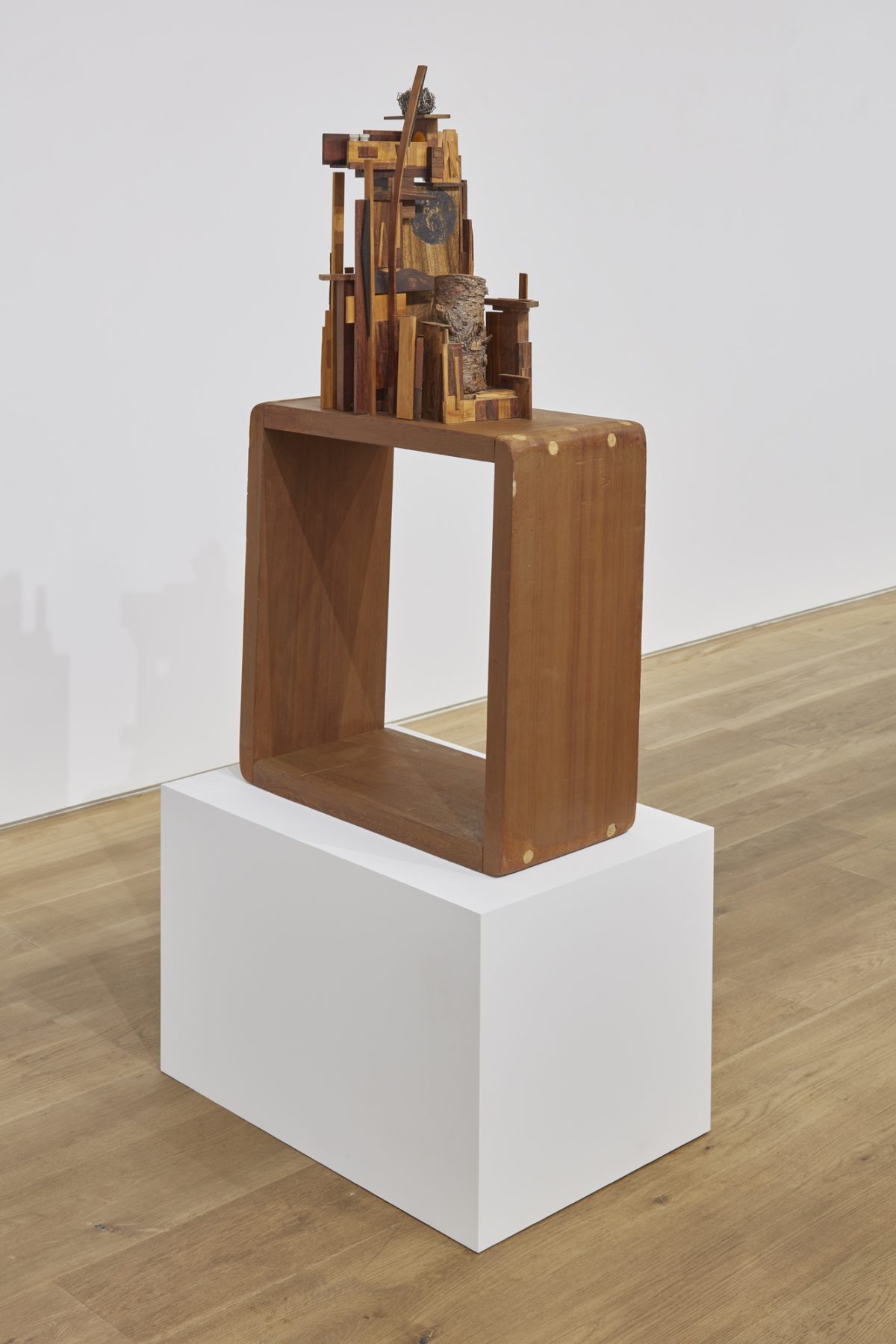
As a discipline, art history still has a long way to go when it comes to rectifying its glaring omissions. Yet among the most compelling recent curatorial interventions are ones that have centered Black women. The latest, You’ve Come A Long Way, Baby: The Sapphire Show, gathers its Black feminist muse from a 1970 survey of African American women artists in LA — Sapphire: You’ve Come A Long Way, Baby. Organized by Ortuzar Projects in Tribeca, the reimagining of the historic show maintains the same stellar lineup, featuring works by Gloria Bohanon, Suzanne Jackson, Betye Saar, Senga Nengudi (then Sue Irons), Yvonne Cole Meo, and Eileen Nelson (née Abdulrashid), realized between 1966 and 2021.
Despite its likely status as the first exhibition of all Black women artists in the US, there are very few archival records of the original Sapphire Show. The exhibition was a collaborative response to the patriarchal bias of a Black art survey at Carnation Company that year. Jackson housed the counter exhibition at Gallery 32, the experimental space she ran from her loft in LA in 1969–70. A testament to the mainstream art world’s inattention to African American art in general, and especially that made by Black women, the six featured artists chose to practice Black feminist ethics of uplifting one another when others fail to do so.

The poetic title is perhaps cryptic to younger generations, but in 1970 the pop culture reference would have been immediately recognizable. “Sapphire” parodied Sapphire Stevens, the caricaturist “angry Black woman” character from the controversial radio-to-TV show Amos ‘n’ Andy, which was itself taken off the air after pressure from the NAACP. The sentiment, “You’ve come a long way, baby,” front-loaded for the contemporary presentation, likewise alludes to the original era, referencing a women’s liberation-themed slogan peddled by the cigarette brand Virginia Slims, a British company with historic ties to slavery in the Americas. An archival poster featuring childhood and adulthood pictures of the six artists (one of the original show’s main surviving documents, available in print for free at Ortuzar), further builds on this notion of transformation.
Archival documents on view in the front lobby prime viewers with information about the context of Gallery 32 and the 1970 exhibition through ephemeral materials, photographs, and literature from Suzanne Jackon’s personal archives, including images of the gallery’s original location in the Granada buildings, and of Nengudi, Jackson, and Nelson in 1969–1970.

Entering the main gallery space, a large platform on the floor in the corner near the entryway displays Nengudi’s “Water Composition V” (1969-70/2018): green and yellow liquid filling the vinyl tubes, resembling a neon light installation — one of the artist’s early experiments with the formlessness of natural and synthetic material. Throughout the ‘60s and ‘70s, Nengudi lived between LA and New York while creating abstract sculptures and performances, though she avoided exhibiting work in New York due to the pressure on Black artists to work in social realism, a dynamic which came to a head in the aftermath of Tom Lloyd’s 1968 exhibition at the Studio Museum in Harlem, which faced backlash for its abstractionist aesthetics. In spite of communal skepticism, she continued fusing Blackness and abstraction: “Study for ‘Mesh Mirage’” (1977), hanging on the wall across the gallery, blends conceptualist performance with the opacity of African diasporic masquerade.

Suspended from the ceiling is Jackson’s “Rag-to-Wobble” (2020), a cellular-shaped mass of earthy-colored paint, cloth, and vintage dress hangers. Despite the decades in between, this recent ecological assemblage parallels her 1972 work included in the original show, “The American Sampler” (1972), a painting in which two large birds stand upon a psychedelic tree with a face on it. Revealing a contrast between mysticism and Black cultural nationalism, Betye Saar’s “Taurus” (1967) is a watercolor and ink rendering of the zodiac sign, while her classic assemblage vitrine appropriating racial kitsch, “Auntie & Watermelon” (1973) shows a miniature mammy figurine holding a gun and a broom. The combination of visual symbols of the Black Power movement, spirituality, mixed media formalism, and abstraction in Saar’s, Jackson’s, and Nengudi’s works elucidates the ways in which each grappled with and resisted the dominant aesthetic criteria of the Black Arts Movement.
Much has changed since the early, avant-garde interventions of these artists. The tremendous gaps — historically and geographically — between the 1970 and 2021 exhibitions is deeply apparent: although still unequal to their white and male counterparts, the representation of Black women artists in East Coast exhibitions has expanded greatly. Saar’s 2019 MoMA exhibition, Jackson’s first NYC solo exhibition, also at Ortuzar, and Nengudi’s current retrospective, have offered monumental yet long overdue East Coast spotlights for these esteemed artists.

Meanwhile, Eileen Nelson, Yvonne Cole Meo, and Gloria Bohanon have received far less curatorial and art historical attention. Bohanon’s “Love Notes II: “I Love You This Much” (c. 1980) complements the grooviness of Saar, Nengudi, and Jackson’s experiments with spirituality and mysticism while evoking the solidarity between Black women that guided the original Sapphire Show. Nelson’s “Wood City” (1970s) likewise expresses ecological motifs using wood, a tree limb, and magnets. The sculptural abstraction includes three vials of white beads and soil, suggestive of a spiritual influence. Cole Meo’s “Forbidden Fruit in Garden of Eden” (1965) blends the natural with the biblical through its highly textured painting of a tree rendered in an acrylic collage.
While the commercialism and high-profile nature of a 2021 Tribeca gallery is worlds away from the intimacies of an apartment gallery, the shared themes of spirituality, nature, love, and abstraction stage a potent lesson on overlooked art histories. It may indeed be true that the art world has come a long way in recognizing the pioneering work of Black women artists, but these artists have always been ahead of the curve.

You’ve Come A Long Way, Baby: The Sapphire Show continues at Ortuzar Projects (9 White Street, Tribeca, Manhattan) through July 31.
0 Commentaires